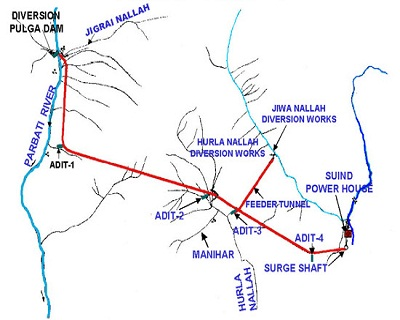



The 2024 Ground Water Quality Report shows improved recharge and groundwater conditions in India. Groundwater extraction is at 60.47% of available resources. The report highlights trends like reduced over-exploited units, increased recharge from water conservation structures, and localized high sodium and RSC values.

Disclaimer: Copyright infringement not intended.
The Union Minister of Jal Shakti has released the Annual Ground Water Quality Report for the entire country for the year 2024.
Parameter |
Details |
|
Total Annual Groundwater Recharge |
446.90 BCM |
|
Annual Extractable Groundwater |
406.19 BCM |
|
Annual Groundwater Extraction |
245.64 BCM |
|
Stage of Groundwater Extraction |
60.47% |
Category |
Units (No.) |
Percentage (%) |
Details |
|
Safe |
4951 |
73.4 |
Groundwater use is within sustainable limits. |
|
Semi-Critical |
711 |
10.5 |
Moderately stressed; requires monitoring. |
|
Critical |
206 |
3.05 |
High stress; significant interventions required. |
|
Over-Exploited |
751 |
11.1 |
Groundwater use exceeds recharge; urgent corrective action needed. |
|
Saline |
127 |
1.8 |
Predominantly brackish/saline groundwater. |
Parameter |
2024 |
2023 |
2017 |
Remarks |
|
Total Annual GW Recharge (BCM) |
446.90 |
Slight reduction |
Increased by 15 BCM |
Increase attributed to recharge from tanks, ponds, and conservation structures. |
|
Recharge from Tanks, Ponds & WCS |
25.34 |
24.95 |
13.98 |
Increased by 11.36 BCM since 2017. |
|
Percentage of Safe Units |
73.4 |
73.14 |
62.6 |
Shows improvement in groundwater conditions. |
|
Percentage of Over-Exploited Units |
11.13 |
11.23 |
17.24 |
Decline reflects better groundwater management practices. |
Category |
Details |
|
Recharge Improvement |
Increase of 0.39 BCM in recharge from tanks, ponds, and WCS in 2024 compared to 2023. |
|
Decrease in Stress Levels |
Reduction in over-exploited, critical, and semi-critical units compared to 2023. |
|
Assessment Units Improved |
Groundwater conditions improved in 128 units compared to 2023. |
Source:
|
PRACTICE QUESTION Q.The Ground Water Report for the year 2024 highlights critical issues regarding the depletion and contamination of groundwater resources across India. Analyze the findings of the report and discuss the major challenges in the sustainable management of groundwater. (150 words) |











© 2025 iasgyan. All right reserved